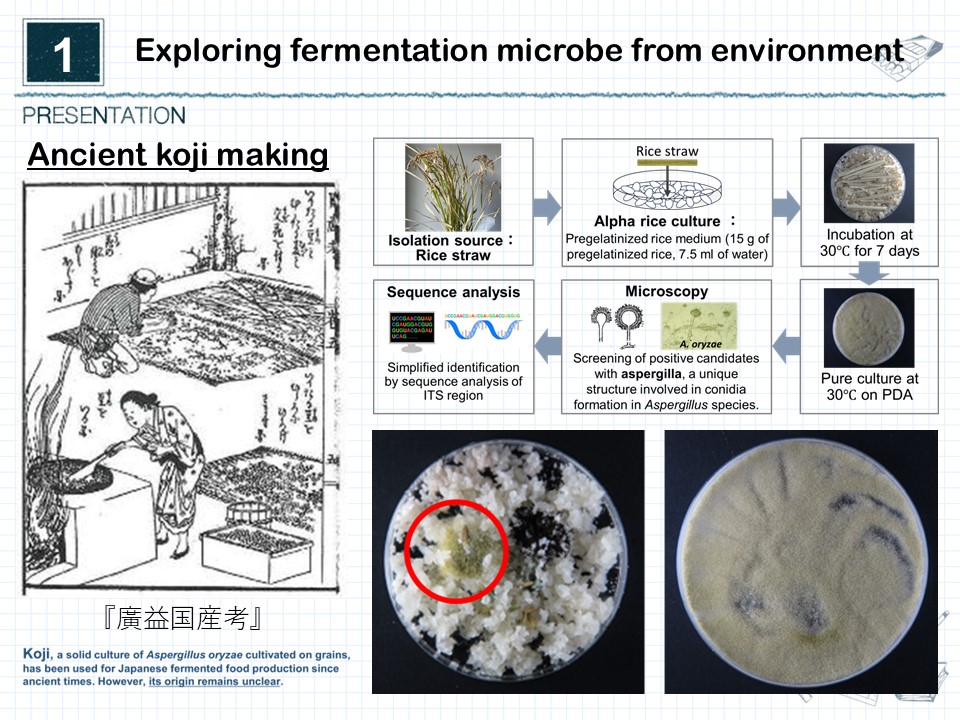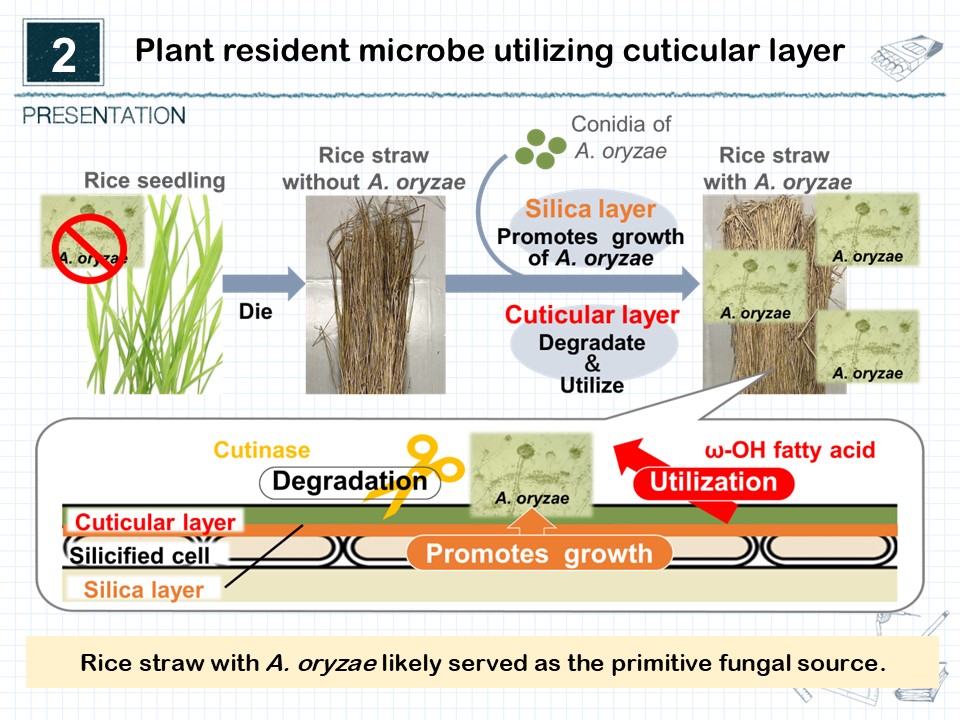In modern fermented food production, safe and high-quality microorganisms suitable for food fermentation are commonly used. However, before microorganisms were discovered, how did people carry out fermentation? Many fermented foods are made from plants, and diverse plant-associated microorganisms inhabit their surfaces. These microorganisms may have played a significant role in the origins of fermentation. In fact, in pre-modern Japan, historical records indicate that the phenomenon of naturally adhering and growing koji fungus was utilized by covering steamed grains with rice straw. We are conducting research to explore these historical records, search for natural fermentation microorganisms, and rediscover fermentation culture while pursuing its new possibilities (Fig. 1).
How did plant-associated microorganisms, believed to be deeply connected with the origins of fermented foods, adapt to plant surfaces? The above-ground parts of land plants are covered by a lipid polymer layer called the cuticle, which protects the plant from external environmental factors. We have recently revealed that certain microorganisms, including koji fungus, can grow by utilizing ω-hydroxy fatty acids, a major component of the cuticle (Fig. 2). This discovery suggests that microorganisms floating and adhering from the outside may have adapted to the plant surface and become established as plant-associated microorganisms. Understanding the process through which microorganisms adapted to plants and became involved in food fermentation is crucial for improving the stability and ensuring the safety of fermented food production. In recent years, fermented foods utilizing natural microorganisms have garnered attention, and their value has been re-recognized. By elucidating the mechanisms of plant-associated microorganisms and harnessing their characteristics, there is potential for the revival of traditional fermented foods and the development of new fermentation technologies.


【Related Papers】
- D. Watanabe and W. Hashimoto*; Adaptation of yeast Saccharomyces cerevisiae to grape-skin environment. Sci. Rep. 13: 9279 (2023)
- H. Sugiura, A. Nagase, S. Oiki, B. Mikami, D. Watanabe, and W. Hashimoto*; Bacterial inducible expression of plant cell wall-binding protein YesO through conflict between Glycine max and saprophytic Bacillus subtilis. Sci. Rep. 10: 18691 (2020)
